Anthurium Jenmanii- Rare
Original price was: ₹2,990.00.₹999.00Current price is: ₹999.00.
1 in stock
Size:Mature plant|Pot Included |Free Shipping
Anthurium Care
Anthurium plants thrive in bright, indirect light, and they do not like exposure to direct sunlight, except in the winter months or in plants that have been carefully acclimated. Wild anthuriums generally live in temperatures at or above 60 degrees Fahrenheit, and the foliage types prefer temperatures even warmer. If temperatures dip below this level, the plant will suffer.
Potted anthuriums prefer a rich but well-draining potting mix that should be kept moist but not wet. Potting mix tailored for orchids, with a few handfuls of sand and a few handfuls of peat moss mixed in, is ideal.
Many anthurium plants are “epiphytic” in natural settings—they grow on other plants instead of in soil. If your plant fails to support itself, give it a stake or small trellis to climb on.
Light
Indoors or out, anthuriums like sun more than shade. They grow best in bright, indirect light. Avoid direct sun.
Soil
Anthuriums prefer a coarse, well-draining potting mix. An orchid mix with additional sand and peat moss mixed in makes perfect soil for anthuriums.
Water
The soil should be kept slightly moist and never allowed to dry out completely. Set the pot in a tray with rocks or gravel that has water. The plant’s water can drain there and help keep humidity levels higher around the plant. Allow the top of the soil to dry out to the touch before watering again. Indoors, this is about once a week. If outside, during hot days, it can be every two or three days between waterings.
Temperature and Humidity
All species of anthurium are native tropical plants, and mimicking those conditions will give you the best chances for success. This plant prefers high humidity and temperatures between 65 and 85 degrees Fahrenheit. These plants can be grown outside in zones 11 to 12 and will likely perish at temperatures of 40 degrees Fahrenheit or less.
In dry climates—or during dry winter months—mist the plant daily to keep humidity levels high. You may find it necessary to run a humidifier constantly during dry months.
Fertilizer
It is safe and recommended to use liquid fertilizer throughout the growing period of your anthurium. Use a fertilizer high in phosphorus, dilute it to 1/4 strength and feed the plants every week. The phosphorus-rich fertilizer will help encourage your anthurium to flower. The common gardening expression, “Weekly, weakly” applies to how often to fertilize and the strength or concentration of fertilizer to water.
Types of Anthurium
- A. andreanum: Common species; heart-shaped leaves that grow a little over 1 foot with red, white, pink, and variegated flowers; distinguished by a straight flower spike
- A. scherzerianum: Common species; most forgiving of anthuriums, features a curling orange flower spike and arrow-shaped leaves
- A. crystallinum: Less common species; deep green, velvety leaves with pronounced white ribs; leaves grow around 2 feet across
- A. faustomirandae: Less common species; monster-sized plant with cardboard-stiff leaves, grows over 5 feet; almost exclusively a greenhouse plant
Pruning
When a plant has dying or wilting leaves, it puts its energy into trying to revive those dying leaves. You can help your plant focus its energy on creating new leaves and flowers by removing the browning leaves. If they’re not easy to pluck, use sterile hand pruners to trim them. Remove faded flowers by snipping them off at the base. Only leave faded flowers on longer if you want the plant to produce seeds.
Take some time to shape your plant; snip off errant leaves or shoots that make the plant look off-balance. Do not remove too many leaves; leave at least three or four.
Only logged in customers who have purchased this product may leave a review.

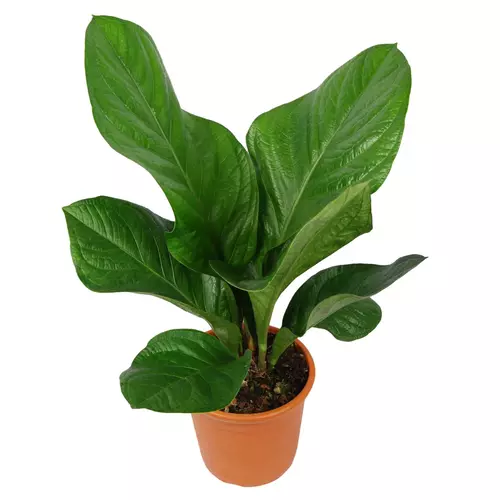
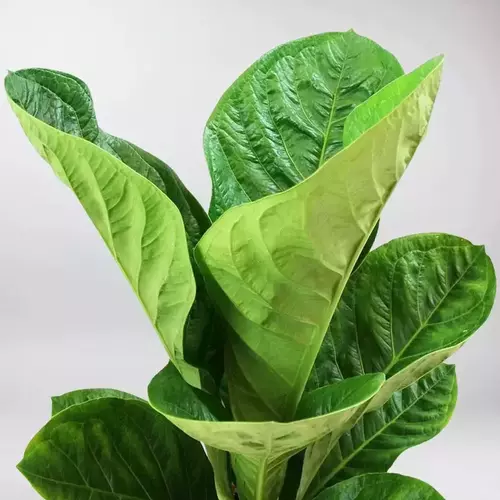
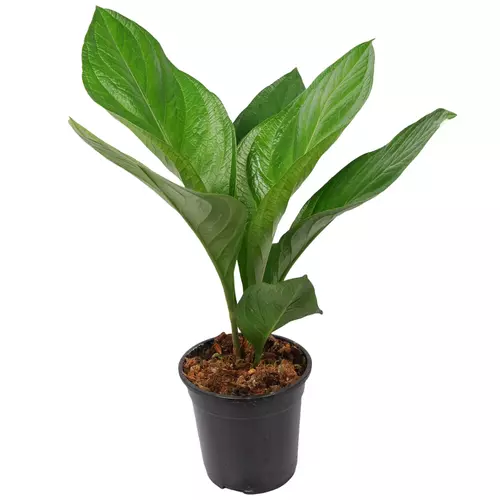
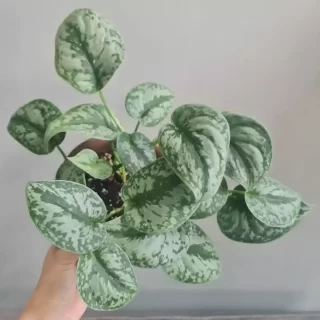
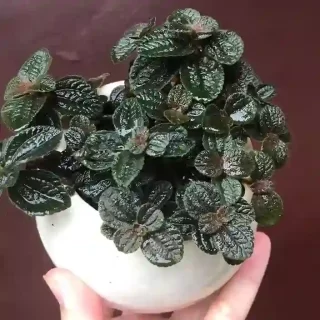

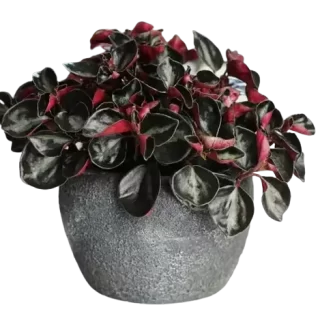
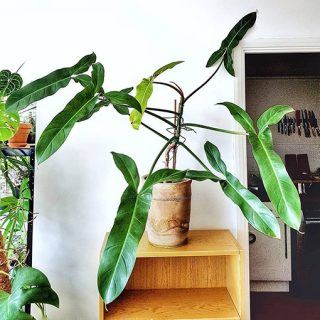
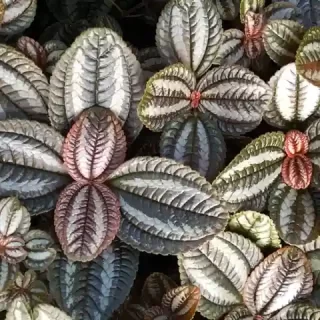
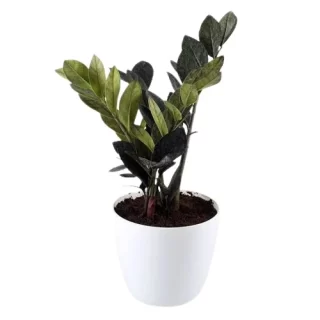
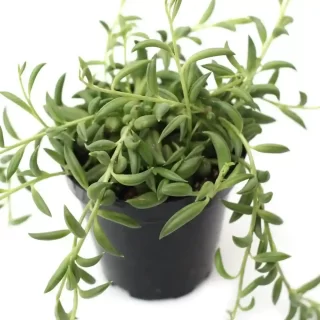
 If you need any assistance, I'm always here. Have you found what you were looking for?
If you need any assistance, I'm always here. Have you found what you were looking for?
Reviews
There are no reviews yet.